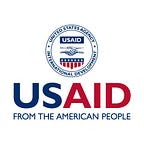Innovation Comes to Uganda Refugee Settlements
Iris scan, fingerprint technology improves accountability and efficiency in refugee assistance
Deborah Nyamwiza holds the goggles up to her face and waits as a computer buzzes in the background, scanning her eyes. The database chimes and a green box pops on the screen — verified. Then she moves on to the next tent to get her share of maize and beans.
Deborah is a Congolese refugee living in Oruchinga settlement, Uganda, and one of the first refugees in the country to undergo an iris scan to claim food rations.
“It was very easy!” said Deborah, who also picked up vegetable oil and salt in this Tuesday food distribution.
Humanitarian aid workers call it a “biometrically verified food distribution.” And Oruchinga is the first refugee settlement in Uganda to adopt this technology to verify the identity of refugees.
In recent years, more and more people have entered Uganda to seek shelter and protection from conflict and persecution in South Sudan, the Democratic Republic of the Congo and other nearby nations. The refugee and asylum-seeker population in Uganda more than tripled between January 2015 and January 2018. The country now hosts approximately 1.4 million refugees and asylum-seekers, more than any other African nation.
Uganda’s progressive refugee policy helps people like Deborah rebuild their lives in a safe place. Refugees here receive land to set up their own homesteads; have the right to seek employment; access services like health centers and schools; and move freely around the country.
Now the Government of Uganda and the UN, in coordination with USAID and other donors, are taking steps to strengthen accountability in refugee response systems to ensure that assistance reaches those who need it most.
The Office of the UN High Commissioner for Refugees (UNHCR) has started a significant effort to use biometric technology — fingerprints and iris scans — to verify all refugees in Uganda. UNHCR interviews all members of a refugee household to check names, countries of origin and other biographical information; it also collects two iris scans and 10 fingerprints from every person older than 3. Biometric verification allows UNHCR and the Ugandan Government to be confident each refugee has a unique identity. This helps protect refugee rights and ensure eligible refugees receive food assistance.
Oruchinga is the first of Uganda’s refugee settlements to enjoy the benefits of the new system. UNHCR officially started the process in Oruchinga March 1, verifying nearly 7,000 refugees like Deborah within a week. The UN agency plans to complete the verification of Uganda’s entire refugee population in the coming months.
The UN World Food Program (WFP), USAID’s partner in this effort, is collaborating with UNHCR to facilitate the fast, accountable and transparent delivery of food assistance to refugees.
Once UNHCR verifies the refugees in a settlement, WFP integrates the biometric data into its food distributions as Deborah experienced at Oruchinga.
To receive monthly food assistance, a refugee household now simply presents its ration card — which is linked via barcode to an electronic database — and an adult for an iris or fingerprint scan. Ding! When the system shows a match, that household can collect its monthly ration and WFP knows that the right amount of food is going to the correct family.
Refugees continue to come into Uganda and emergency food and relief needs in the country show no sign of abating. With the use of biometric technology in Uganda, humanitarian partners are working to ensure that assistance reaches refugees responsibly and efficiently, providing the resources they need to start over — and move forward — in their new homes.
About the Author
Sarah Cohen is an information officer for USAID’s Office of Food for Peace. Follow @USAID_FFP.
